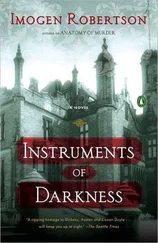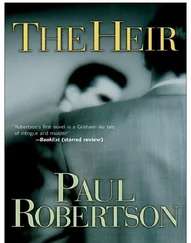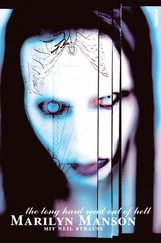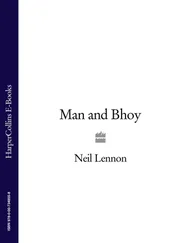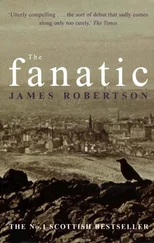The second major challenge to introducing Strauss’s thought is that the vast majority of his writings consists of commentaries on other writings, mostly works from the history of political thought in the western intellectual tradition (inclusive of the Jewish and Islamic Middle Ages), from the ancient Greeks to the twentieth century. In his commentaries he often assumed the voice of the author of the writing under discussion, or of one of the characters in a dialogue. Strauss only occasionally wrote in his own voice, and never provided a complete or comprehensive account or analysis of his philosophical claims. This, of course, increases the challenge of sorting out what Strauss’s thought is in its own terms. This indirect form of “communication through commentary” is not an accidental feature of Strauss’s thought; it belongs to his core claim about how philosophy arises from opinion, and how philosophy functions in the context of opinion.
The third great issue for the reader of Strauss is that Strauss claimed as one of his most important discoveries a tradition of “esoteric” writing in the western philosophical tradition, from the ancient Greeks through to the eighteenth century. He argued that many philosophers hid their teaching under an “exoteric” or outer form. This raises the obvious question: does Strauss himself also practice this art? We will discuss Strauss’s understanding of exoteric/esoteric teachings at length in chapter 3– but at this point, it is important at least to recognize the complication it presents. In claiming to understand Strauss, the reader must acknowledge that Strauss himself might have – or perhaps should be presumed to have – a secret or “esoteric” teaching. This obviously disrupts the normal assumption that authors mean what they say, and so complicates the task of discerning what Strauss might mean.
These challenges to understanding and explaining Strauss’s thought have convinced me that a somewhat unusual approach is needed for a book such as this one that is trying to introduce Strauss’s thought in a balanced way, both sympathetically and critically. Because there is so much controversy about what Strauss’s position is, I have chosen to quote from him much more than is normal in an introductory book. Also, because his published writing is often complex and circuitous, I have made much use of his letters, unpublished writings, and lectures, where he is often clearer and more direct about his views. The huge advantage such an approach affords is that Strauss is a very good writer. His sentences are usually clear and, when he wants to, he can be wonderfully evocative and compelling. We will be trying to use Strauss to help us understand Strauss.
So while things can get complicated in trying to get at what Strauss’s thought consists in, and there is a large and vexed secondary literature, we will seek to find our way to the center of his thought by focusing upon the question that was for him at the center of human existence: what is the best or right life? Strauss’s work was a continuous response to this question.
The first thing is to provide an outline of Strauss’s life, and then to describe briefly some of the basic themes and claims of his thought as it seeks to think the question of the best life.
Leo Strauss was born in 1899 into an observant Jewish family in Germany. Even before attending university, he converted to “simple, straightforward political Zionism” (JPCM 460), and was involved in the Zionist movement during his twenties. Strauss studied philosophy at the University of Marburg and the University of Hamburg. While a student, he served as an assistant to Edmund Husserl, the founder of the school of phenomenology. Strauss attended some classes and seminars of Martin Heidegger, whom Strauss considered to be the greatest thinker of his generation. After completing a doctorate at the University of Hamburg under Ernst Cassirer in 1921, Strauss became a researcher at the Academy for the Science of Judaism in Berlin, focusing on the history of Jewish philosophy, including work on Moses Mendelssohn, Spinoza, and Maimonides. His first book, Spinoza’s Critique of Religion , was published in 1930. At about this time, Strauss had what he described later as a “change of orientation” that opened up for him the possibility of a recovery of pre-modern rationalism. He later stated that the first expression of his “change of orientation” was to be found in his 1932 review of a book by Carl Schmitt, the important legal theorist who joined the Nazi Party shortly afterward. When the Nazis came to power in 1933, Strauss was in France on a Rockefeller research fellowship. The following year, he moved to England to work on Thomas Hobbes. In 1937, he went to the United States, eventually securing a permanent position at the New School for Social Research in New York City. In 1949, Strauss began two decades of teaching in the Department of Political Science at the University of Chicago. He retired and was named Professor Emeritus at the University of Chicago in 1968, but continued teaching and giving guest lectures at Claremont Men’s College and then at St. John’s College in Annapolis, Maryland, until his death in 1973.
Themes in Strauss’s Thought
What matters most about Leo Strauss’s life is not primarily his deeds but his thoughts. There are two basic ways we could approach Strauss’s importance as a “key contemporary thinker”: one would be chronological, and the second thematic. This book will do a bit of both, but it is primarily thematically structured. This is not an intellectual biography, but in chapters 1and 2, I will consider Strauss’s intellectual development in the context of the Weimar Republic, and especially the significance and meaning of what he calls his “change of orientation.” We will also follow him to the United States, where he taught for over thirty years and published the books that established him as one of the leading figures in political philosophy and the history of political philosophy in the mid-twentieth century. We will conclude the book by looking at his influence especially upon American conservative thought and American politics.
While there is a general biographical trajectory through the course of the book, its more basic structure is thematic – and, in order to explore these themes across the range of Strauss’s thought, we will often look at writings from different decades in his life. The primary justification for this is that, once Strauss underwent his “change of orientation” sometime around 1930, his thought retained a basic stability of outlook. This is not to deny some important developments and even corrections within his thought, and certainly we will note them when they arise. Nonetheless, the essence of Strauss’s philosophical orientation and vision remained remarkably consistent.
Let me turn, then, to the themes that will organize this book and help orient us in making sense of Strauss’s thought. This list is by no means exhaustive, but I want to suggest that these five themes do form something like the most fundamental aspects of Strauss’s thinking:
1 the return to natural right and the recovery of classical rationalism;
2 the theological-political problem;
3 the recovery of the exoteric/esoteric distinction;
4 classical political philosophy; and
5 the critique of modern political philosophy.
The first three themes will form our first three chapters, and we will explore the development of Strauss’s thought in the context of the Weimar Republic in Germany, and in his first few years of exile from Germany in France, England, and the United States. Chapters 4and 5will consider the two crucial components of his mature thought, which find expression particularly in work Strauss published while he was at the University of Chicago, and, above all, in his most comprehensive book, Natural Right and History (1953). But it is important to remember that the key earlier themes remain active right through his work: Strauss himself explicitly states that the theological-political problem was the theme of his investigations throughout his scholarly career. In chapter 6, we will consider Strauss’s legacy and specifically his influence on American politics.
Читать дальше



